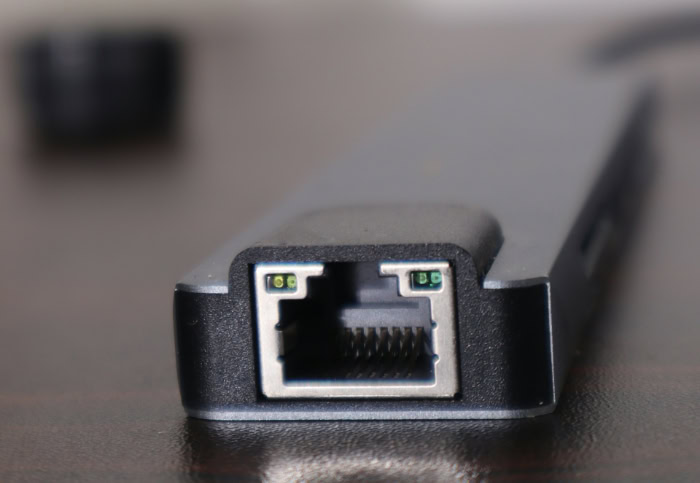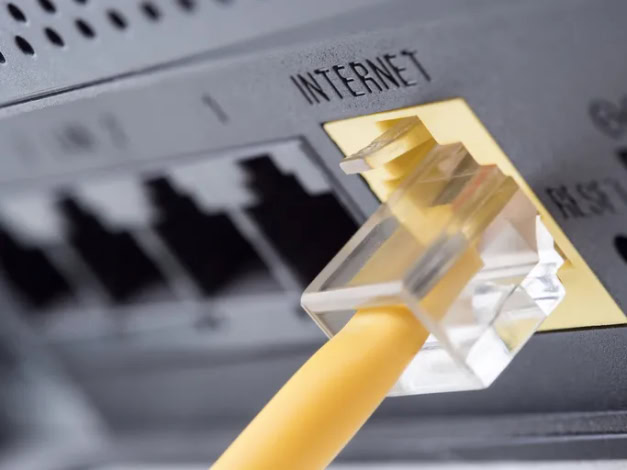What Is a Network Adapter? Your Bridge to the Web

You can pay for the fastest internet package available, but that speed means nothing if your computer cannot speak the language. That critical translation happens inside a network adapter, often known as a network interface card or NIC.
This hardware acts as the bridge for every email you send, every game you play, and every file you download. If that link to your router fails or becomes outdated, your entire experience suffers regardless of your provider.
What Is a Network Adapter?
A network adapter serves as the fundamental communication bridge for any computing device. Without this piece of hardware, a computer remains an isolated system unable to access the internet, share files, or communicate with local printers.
It functions effectively as a translator that converts digital data from the operating system into signals that can travel across cables or radio waves to reach other destinations.
Core Definition and Terminology
The network adapter acts as the physical interface between a computer and the network medium. It is responsible for preparing, sending, and receiving data packets.
While the technical function is consistent, the terminology often varies based on the context or the era of the hardware.
Technicians often refer to this component as a NIC, which stands for Network Interface Controller or Network Interface Card. The term “network card” usually implies a separate circuit board installed inside a desktop computer, whereas “adapter” is a broader term that includes external USB dongles or chips integrated directly into a laptop motherboard.
Specific names like “Ethernet adapter” or “Wi-Fi adapter” simply clarify if the hardware connects via a physical cable or through wireless signals.
Network Placement and Layer Interaction
The adapter resides at the boundary of the device, acting as the gatekeeper for all incoming and outgoing traffic. It creates the necessary link to external networking hardware such as switches, routers, and wireless access points.
In the context of structured networking models, the adapter operates at the foundation. It handles tasks assigned to the Physical Layer by generating electrical, optical, or radio signals.
Simultaneously, it manages Data Link Layer responsibilities by organizing raw bits into structured frames. This hardware coordinates closely with the software-based TCP/IP layers in the operating system to ensure that high-level application data moves correctly onto the physical wire or airwaves.
Hardware Components and Identification
Several essential components work together within the adapter to maintain a stable connection. A controller chip manages the processing of data and instructions to offload work from the computer's main CPU.
For wired connections, a port (typically an RJ-45 jack) accepts the cable, while wireless versions utilize a transceiver and antenna system to capture radio signals. A bus interface, such as PCIe or USB, connects these components to the rest of the computer.
Every adapter also possesses a critical identifier known as the Media Access Control (MAC) address. Manufacturers burn this unique alphanumeric string into the hardware during production.
It serves as a permanent fingerprint that allows routers and switches to identify the specific device on a local network, ensuring that data packets reach the correct destination among dozens of connected devices.
Types and Form Factors

Network adapters come in various shapes and sizes designed to fit specific devices and performance requirements. Manufacturers create distinct form factors to accommodate everything from slim ultrabooks to massive data center servers.
The physical design determines how the adapter connects to the computer and exactly which network media it supports.
Wired Ethernet Configurations
The standard for connection stability remains the wired Ethernet adapter. In most desktop computers and workstations, manufacturers solder these components directly onto the motherboard for immediate use.
Power users or professionals requiring higher speeds often bypass these integrated chips in favor of a dedicated Network Interface Card (NIC) that slides into a PCIe slot. A dedicated card often provides better heat management and offloading capabilities than a standard onboard chip.
Modern laptops frequently differ in their approach to wired connectivity. To maintain slim profiles, many portable devices lack the physical space for a traditional RJ-45 Ethernet jack.
Users restore this functionality through external USB adapters or docking stations. These peripherals bridge the gap by converting a USB-A or USB-C port into a standard network connection, effectively acting as an external NIC that can be plugged in or removed as needed.
Wireless and Combo Modules
Mobility relies on Wi-Fi adapters that trade physical cables for radio frequencies. These components utilize internal or external antennas to transmit and receive signals from a wireless access point.
While desktop PCs might use a PCIe card with protruding antennas for maximum range, laptops and tablets typically use small internal cards that connect via an M.2 interface. These internal modules sit flat against the motherboard to fit inside tight chassis enclosures.
Efficiency in design has led to the widespread adoption of combo cards. Rather than installing separate hardware for different wireless protocols, manufacturers combine Wi-Fi and Bluetooth capabilities into a single module.
This integration reduces power consumption and saves physical space inside the device. A single card manages the high-speed data transfer for the internet while simultaneously handling low-bandwidth connections for peripherals like wireless mice or headphones.
Specialized and Virtual Interfaces
Enterprise environments often demand hardware capable of performance levels far beyond consumer standards. Fiber optic adapters replace traditional copper wiring with light-based transmission to achieve extreme bandwidth and traverse long distances without signal degradation.
High-end servers also utilize Converged Network Adapters (CNAs). These sophisticated units combine standard local area network traffic with storage area network traffic, allowing a server to handle data processing and storage retrieval through a single interface.
Not all adapters exist as tangible hardware. Virtual network adapters operate entirely as software constructs within virtualization environments.
When a computer runs virtual machines, the software creates these logical interfaces to mimic physical hardware. The operating system inside the virtual machine sees a standard network card and interacts with it normally, even though the “card” is simply code directing traffic through the host computer's physical connection.
How a Network Adapter Works
The internal operations of a network adapter involve a continuous, high-speed translation process. This hardware functions as a sophisticated interpreter that stands between the digital logic of the computer and the physical reality of the network cable or airwaves.
It manages the complex task of taking static files or commands and converting them into a format that can travel across a medium to reach another device.
Data Conversion and Signal Processing
The process begins when the computer's central processor sends data to the adapter. The adapter does not simply dump this data onto the network; it first organizes the raw information into manageable chunks called frames.
This process is known as encapsulation. The adapter adds header and footer information to each chunk, similar to placing a letter inside an addressed envelope.
Once the frame is ready, the transceiver component takes over. It converts the logical binary data, the ones and zeros, into physical signals.
For wired connections, these become electrical pulses on a copper wire or light pulses in a fiber optic cable. For wireless connections, the transceiver modulates the data into radio waves broadcast via the antenna.
Incoming traffic triggers the reverse operation. The transceiver detects signals on the medium and reconstructs them into digital frames.
The adapter's controller chip inspects these frames to ensure they are valid before stripping away the “envelope” and passing the raw payload up to the computer's memory. To ensure this process runs smoothly, adapters utilize buffer memory.
This onboard storage holds data temporarily if the network is transmitting faster than the computer can process it, or vice versa, which prevents data loss during bursts of high activity.
Protocols and Traffic Management
Communication relies on strict rules known as protocols. The network adapter is responsible for implementing low-level standards such as Ethernet (IEEE 802.3) for wired links or Wi-Fi (IEEE 802.11) for wireless ones.
These standards dictate exactly how long a signal lasts, how loud it should be, and when it is safe to transmit. The adapter works in tandem with the operating system's TCP/IP stack to ensure end-to-end delivery.
While the OS manages the final destination address (IP address), the adapter handles the local delivery address.
This local identification uses the Media Access Control (MAC) address. The adapter filters all network traffic it hears, ignoring any frames not addressed to its specific MAC address or a broadcast address.
Beyond simple identification, the adapter manages flow control and error detection. Before accepting a frame, it performs a mathematical check (CRC) to verify the data did not get corrupted during transit.
It also monitors the line for collisions, which occur when two devices try to talk at once, and manages the timing of retransmissions to avoid congestion and packet loss.
Operating System Interaction
Hardware requires specific software instructions to function correctly within a computing environment. This link is provided by the device driver, a small program that allows the operating system to recognize the adapter, power it up, and configure its settings.
When a computer boots, the OS loads the driver, which initializes the hardware and establishes a communication channel.
Once this link is active, the operating system's network stack can utilize the adapter for higher-level functions. When a user opens a web browser or connects to a shared folder, the application sends a request to the OS network stack.
The stack processes the request and hands it off to the driver, which instructs the adapter to transmit the data. This layered approach means that applications like Chrome or Spotify never need to know the technical details of the hardware; they simply ask the OS for a connection, and the driver and adapter handle the physical execution.
Choosing the Right Network Adapter

Selecting the correct network adapter requires balancing performance needs with physical constraints. The hardware you install determines the maximum speed and stability of your connection, meaning even a high-end router cannot compensate for a lackluster adapter.
Users must evaluate their specific daily activities and the physical layout of their workspace to determine which device will provide the most consistent experience.
Matching Hardware to Usage
The decision between wired and wireless usually comes down to a choice between stability and convenience. A wired Ethernet adapter remains the superior choice for activities that demand consistent data flow.
Gamers, video editors transferring large files, and professionals participating in critical video calls benefit significantly from the low latency and interference-free connection of a cable. If the device sits in a permanent location near a router or wall jack, a wired connection eliminates the fluctuations common with radio signals.
Wireless adapters prioritize mobility and ease of installation. They are the practical solution for users who cannot drill holes for cables or those who frequently move their devices between rooms.
Scenarios often dictate the choice. A user upgrading an older desktop might install a dedicated PCIe Wi-Fi card to avoid running a fifty-foot cable through a hallway.
Conversely, a laptop user with a broken internal Wi-Fi module might find a small USB adapter to be the fastest and most cost-effective way to restore connectivity without opening the chassis.
Critical Specifications and Features
Performance capabilities vary widely between models. Speed ratings are the primary metric to check.
A standard Gigabit Ethernet port suffices for most home users, but content creators working with network-attached storage often require 2.5Gbps or 10Gbps cards to maximize transfer rates. For wireless users, the supported Wi-Fi standard is crucial.
An adapter supporting Wi-Fi 6 or 6E will handle traffic much more efficiently in crowded environments than an older Wi-Fi 5 model.
The physical interface also dictates performance. Internal PCIe cards generally offer better bandwidth and power management than USB alternatives.
However, for USB adapters, the version matters. Plugging a high-speed Wi-Fi adapter into an old USB 2.0 port creates a bottleneck that severely limits speeds.
Users should also look for value-added features. Some premium network cards include processor offload capabilities that handle network calculations directly on the card, freeing up the computer’s CPU for other tasks.
Dual-port cards allow for link aggregation to double speeds or provide redundancy if one line fails.
Compatibility and Environmental Factors
Hardware is only useful if it functions correctly with your existing equipment. Operating system support is the first hurdle.
While Windows automatically recognizes most modern hardware, Linux and macOS users often need to verify that specific drivers exist before purchasing. Physical slots are another concern.
A user must check if their motherboard has an open PCIe slot and if that slot is not blocked by a large graphics card.
The surrounding environment plays a massive role in performance. A high-speed Wi-Fi adapter cannot perform well if the computer case sits under a metal desk or in a corner surrounded by concrete walls.
In these situations, an adapter with a remote antenna base that sits on top of the desk is superior to one with antennas sticking directly out of the back of the PC. Furthermore, the network equipment sets a hard limit.
Purchasing a cutting-edge 10-Gigabit adapter is a waste of money if the router or switch only supports 1-Gigabit speeds.
Setup, Configuration, and Troubleshooting
Getting a network adapter up and running is usually a straightforward process, but correct installation is vital for long-term stability. Whether you are building a new PC or breathing life into an old laptop, the physical installation is only the first step.
You must also configure the software settings to ensure the device communicates effectively with your router and the wider internet.
Installation and Basic Setup
The complexity of installation depends entirely on the form factor you chose. Internal adapters, such as PCIe cards, require you to power down the computer, open the case, and firmly seat the card into the appropriate slot on the motherboard.
You often need to secure the metal bracket with a screw to prevent the card from wiggling loose when cables are attached. External adapters are far simpler.
You simply plug the USB device or docking station into an available port.
Once the hardware is physically connected, the operating system takes over. Modern operating systems like Windows or macOS usually detect the new hardware immediately and install a generic driver to get it working.
However, relying on the default driver can sometimes limit performance or features. It is often better to download the specific driver from the manufacturer's website.
You can confirm the installation was successful by checking the Device Manager or System Report to ensure the adapter appears without any warning icons or error messages.
Configuring Network Settings
After the hardware is recognized, the adapter needs a digital address to participate in the network. In most home and office setups, this happens automatically through a protocol called DHCP.
The router assigns the adapter an IP address, a subnet mask to define the local network size, and a default gateway that acts as the exit point to the internet. It also assigns DNS server addresses, which translate website names like “google.com” into numeric IP addresses.
Wireless adapters require a few additional steps before they can accept these settings. You must manually select the correct Service Set Identifier, commonly known as the SSID or network name.
You will then need to enter the security key or password. Users should also pay attention to the security mode. Ensuring your adapter uses WPA2 or WPA3 encryption is critical for keeping your data safe from local eavesdropping.
Diagnosing and Fixing Common Issues
Even high-quality hardware can experience hiccups. Common symptoms of adapter issues include a “no connection” error, significantly slower speeds than your internet plan allows, or a connection that frequently drops out during use.
Sometimes the computer will report “limited connectivity,” which usually means the adapter talks to the router but cannot reach the internet.
Troubleshooting typically starts with the physical layer. Loose cables or antennas hidden behind metal obstructions are frequent culprits.
If the hardware looks secure, the problem often lies in the software. Reinstalling or updating the device driver can resolve conflicts that occur after an OS update.
If a wireless connection is weak, moving the computer closer to the router or changing the Wi-Fi channel can reduce interference. In cases where an internal component has failed, disabling the onboard adapter in the BIOS and using a cheap USB replacement is often the most cost-effective solution.
Conclusion
The network adapter remains the essential hardware bridge that allows a device to participate in wired or wireless networks. It silently manages the constant flow of sending and receiving data packets that defines modern computing.
Without this component, even the most powerful workstation becomes an isolated machine unable to reach the outside world.
A clear grasp of how these components operate, from their physical form factors to their internal signaling, provides the knowledge necessary to solve frustrating connectivity problems. Users who take the time to match the right specifications to their specific environment will find themselves making smarter upgrades.
Recognizing the difference between a simple driver error and a hardware bottleneck ensures that your connection remains fast, stable, and reliable for years to come.


